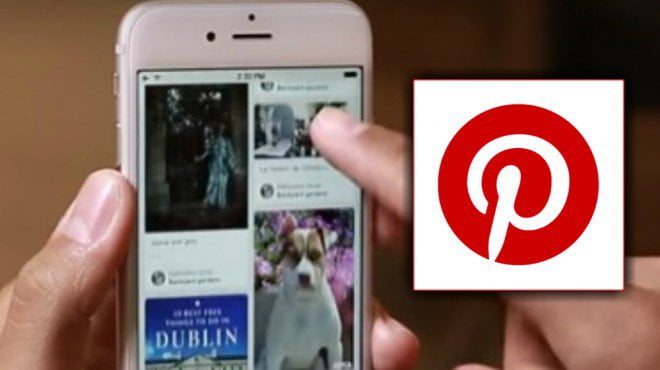
Does Pinterest still matter? Once it was the dominant visual social media network. But now Instagram and a host of trendier platforms, like Periscope and Snapchat, have solidly dethroned Pinterest’s claim as the visual network du jour.
But don’t count it out of your social media strategy just yet.
Pinterest, like Facebook, Twitter and Instagram, remains an important space for businesses to “nurture, maintain and share their unique philosophy, integrity and corporate purpose” writes Marie Alonso on social media branding.
Ready to get your Pinterest strategy back on track? Below are some ways to use Pinterest in 2016.
2016 Pinterest Trends
Why the “Buy” Button Matters
Pinterest may not be as trendy as Instagram, but the network is hardly flying under the radar, especially after it kicked off the “buy button” invasion of 2015. The Internet officially has “buy button” fever, with networks from YouTube to Twitter joining in with shop-able buttons. The addition of buy buttons is huge for mobile ecommerce: consumers are more likely to purchase a product directly inside an app than clicking through multiple link layers to a third-party site. Now, any commerce company that uses Shopify, Demandware, IBM Commerce, Magento or Bigcommerce can utilize Pinterest’s buy buttons, streamlining the direct purchase process.
“Intent to buy” has long been what sets Pinterest apart from other networks. Pinterest boards are aspirational: from interior decorations and recipe collections to wedding planning and nursery design, the leap from dream to reality is just a click away. In the past, however, Pinterest users who were primed to make a purchase based on a pin were faced with a challenge.
Many pins may link back to old blog posts or products that are no longer for sale, making purchasing difficult. Motivated consumers would have to do a Google image search for the product or settle for a different item. A great discovery service needs inventory for continued expansion.
“By getting more merchants and more buyable pins and more products on the platform, we’re able to build smarter and better recommendations and search,” Michael Yamartino, Pinterest’s head of commerce, told Fortune.
Early results show that the buy button is working, especially when it comes to reaching new customers. The online clothing boutique Spool No. 72 reports that 84 percent of all customers acquired via buy button pins are new, according to Fortune. Handmade goods shop Madesmith says that as of October 2015, buyable pins already represented seven percent of all company sales. And Shopify reports that the average order coming from Pinterest is $50, higher than any other social media platform.
Small Business Brand Building on Pinterest
But what about small businesses that don’t sell merchandise online or aren’t ready for the buy button? Can these businesses leverage the power of Pinterest to continue to build their brands? Absolutely. Consistently pinning products or images that reflect your brand is key to building consumer relationships, strengthening brand loyalty and reaching new customers. Keep these best practices in mind:
Pin Consistently, but Space Out Your Pins
Aim to pin multiple times every day, rather than dumping 20+ pins all at once. (You’ll overload your follower’s feed and miss out on being seen by as wide an audience.) Simplify the process by scheduling pins ahead of time, just as you would schedule other social media postings to promote a blog article.
Buffer is one of my favorite tools for scheduling social media posts, including Pinterest. Buffer also comes with the image creator tool Pablo, so you can take a photo straight off your blog, overlay with custom typography, and scale it correctly for Pinterest.
Create Boards Matching Your Consumers’ Interests
Don’t turn your boards into a 24/7 stream of promotional material: create boards that naturally align with your customers’ interests. Aquarium Finatics, an online guide to setting up your first at-home aquarium has an incredibly diverse and creative Pinterest account ranging from the world’s best public aquariums and out-of-this-world hotel aquariums to Shark Week and Aquarium inspired gifts for kids.
This same diverse approach goes for selling merchandise. Women’s active wear company Athleta has boards titled “Go Outside”, “Fuel Your Fitness” and “Run Wild”, in addition to boards dedicated to showcasing the company’s products.
Be Part of Something Bigger
Invite your followers to participate in a shared pinning board, or join a few of your own. Hannah Crum, the creative force behind the brand Kombucha Kamp, shares her love for fermented/nutrient dense foods on Pinterest via community boards like “Whole Foods Recipes” and “Holistic Health Topics.”
Bottom Line
You don’t have to sell products directly on Pinterest with a “buy” button in order to build your brand. But you do need a consistent and diverse posting strategy. Pre-schedule pins for posting at peak times throughout the day.
Create gift guides, make a thoughtful reading list, invite followers to join community boards (or host guest pinners), and host giveaways exclusively for your followers.
[“source-smallbiztrends”]




